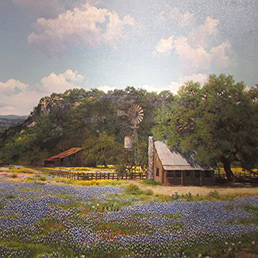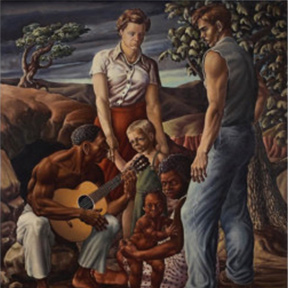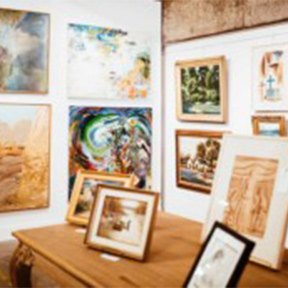- (214) 720-4044
- info@daviddike.com
- Mon - Fri: 10 am - 5 pm
Mulhaupt, Frederick John
Frederick John Mulhaupt
(Am. 1871-1938)
Known for his skillful depictions of the landscape and seascapes of Cape Ann, Massachusetts, Frederick Mulhaupt was very much a part of that region’s art community in the early part of the 20th century. His paintings, especially the working harbor scenes, captured the essence of the area, which was already a favorite spot of famous painters such as Winslow Homer and Fitz Hugh Lane.
He was born and raised in Rock Port, Missouri by prosperous German parents, and he had an early job as manager of a newspaper and magazine in Dodge City, Kansas but found it too lawless so he moved to Kansas City. There he apprenticed to an itinerant painter, enrolled at the Kansas City School of Design, and then at the Art Institute of Chicago. He earned much respect as an artist, and in 1895 was one of the founding members of the Palette and Chisel Club. He stayed in Chicago for many years, eventually becoming an instructor in figure classes at the Art Institute.
In 1904, he moved to New York and lived at the Salmagundi Club and then spent several years in Paris, exhibiting at the Paris Salon and enjoying the exploration of modernist art movements. The influence of Impressionism is obvious on his work.
He returned to the United States and again lived at the Salmagundi Club where he associated with some of the foremost artists of his day. Although based in New York, he spent his summers in Gloucester, Massachusetts from 1907, and in 1922 became a year-round resident. It was there that he came into his own as an artist.
He was active in the Boston North Shore Art Association, and his work was sold through galleries. He exhibited at the major museums including the National Academy of Design, the Art Institute of Chicago, and the Pennsylvania Academy of the Fine Arts. I n 1926, he was elected an associate member of the National Academy of Design and remained a vital part of the New York art world even when he lived elsewhere.
He married Agnes Kingsley, a teacher, and they had one son. He supported his family by teaching workshops and selling his paintings.





